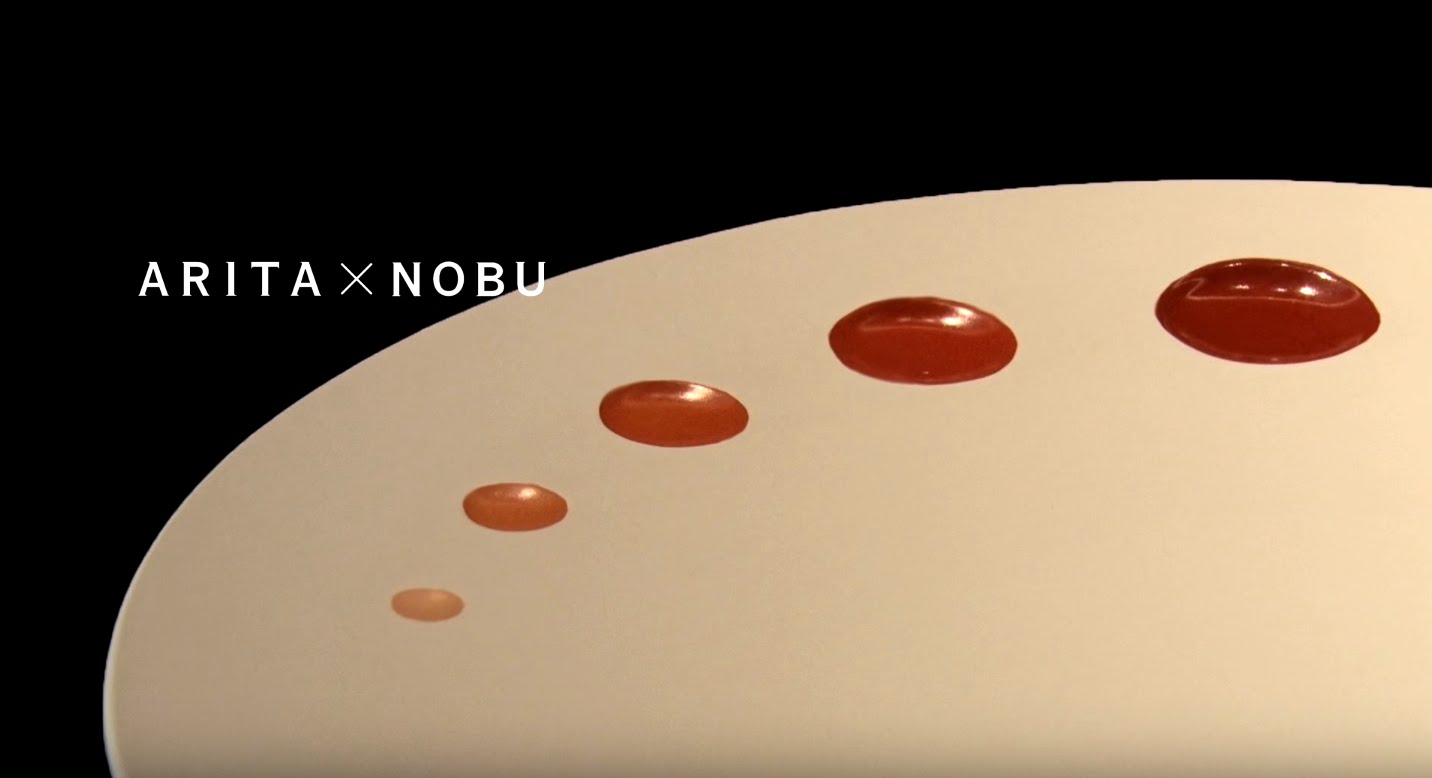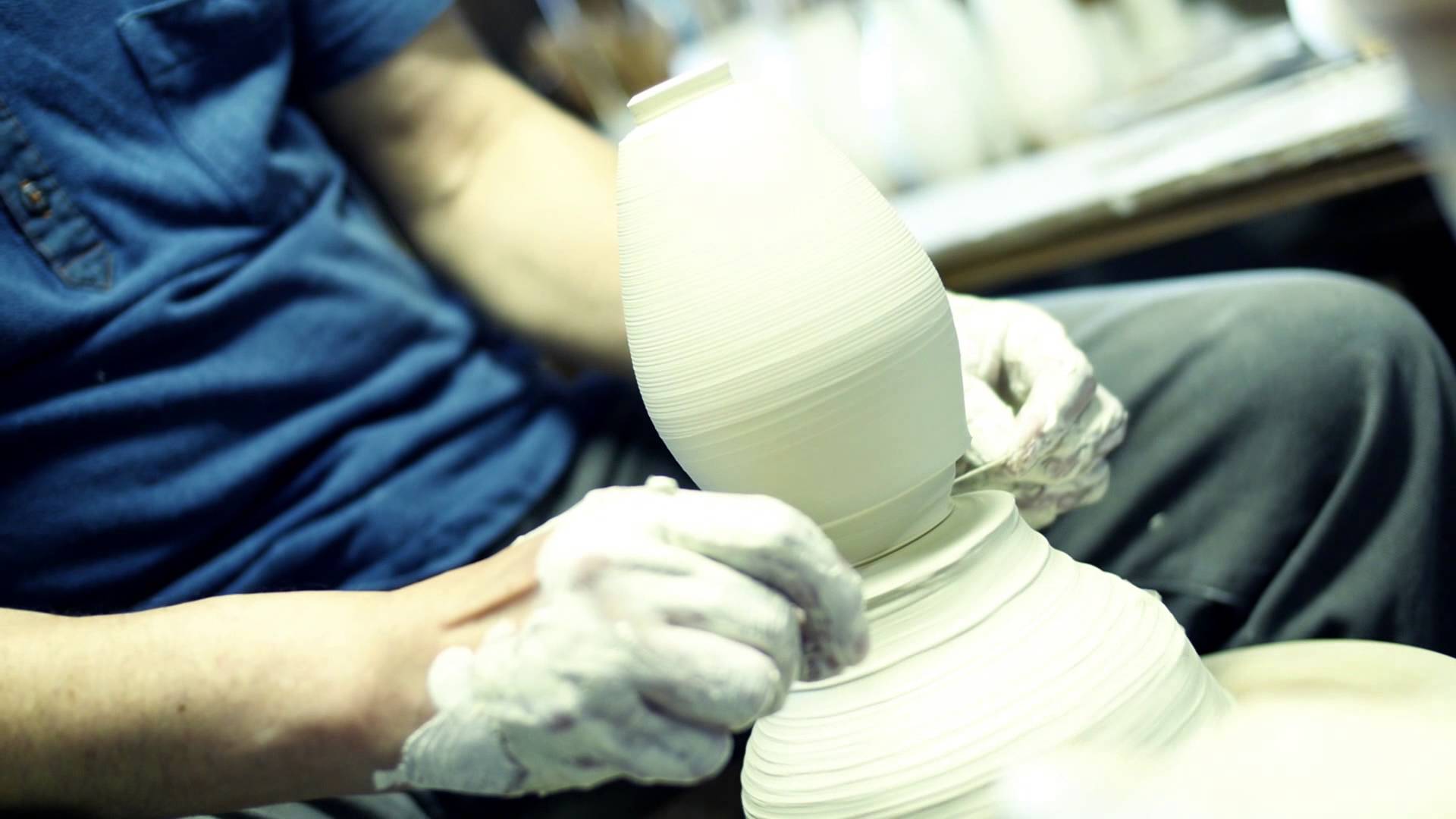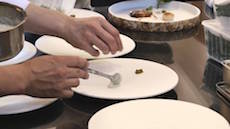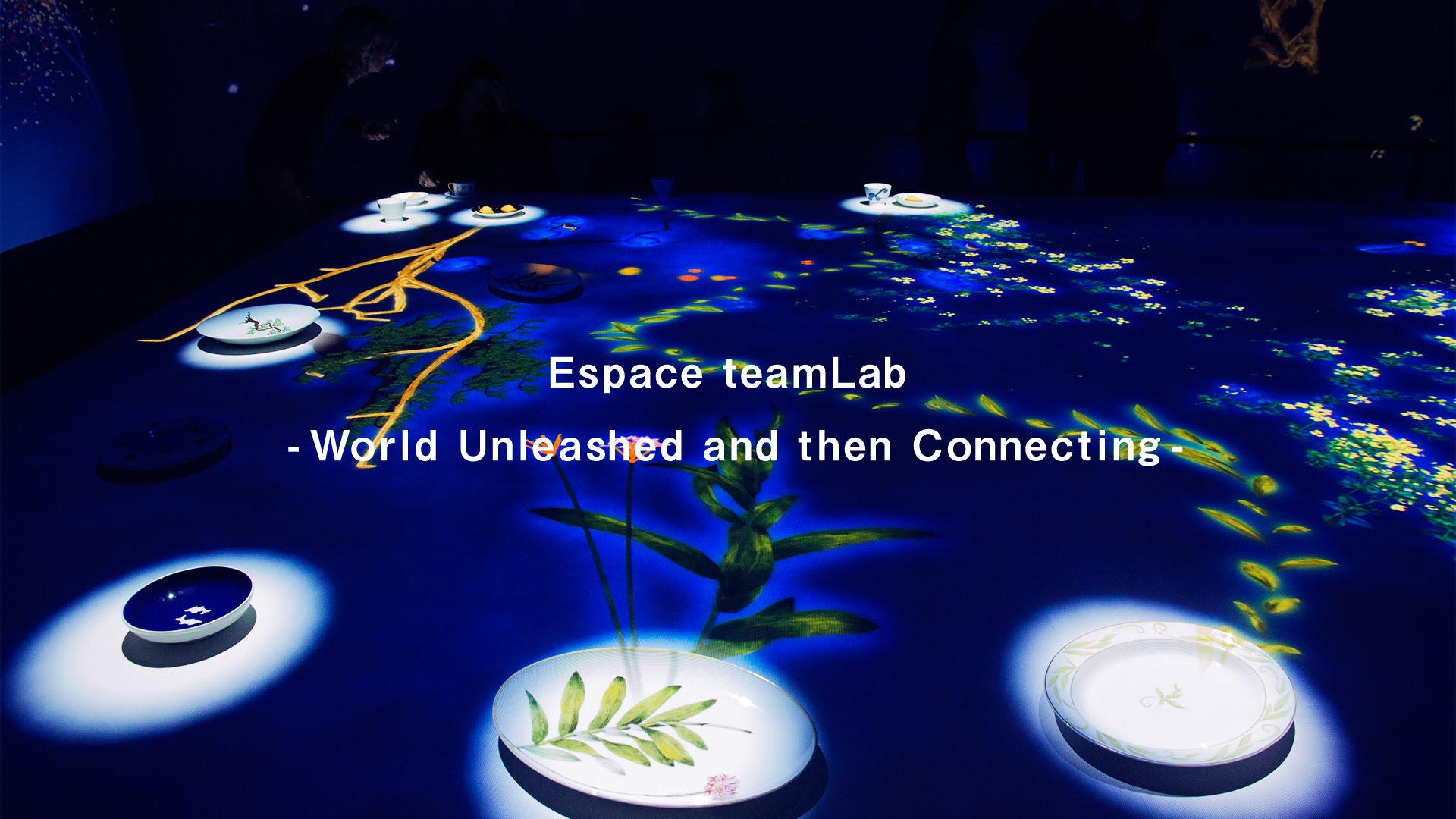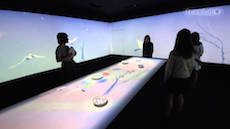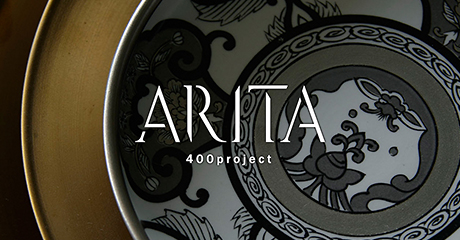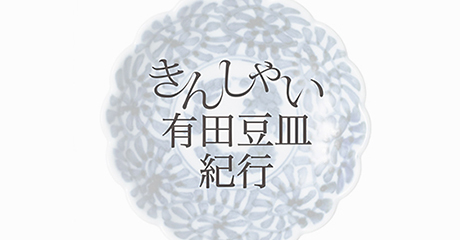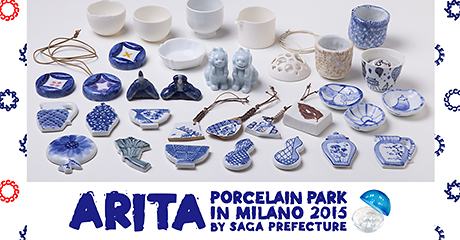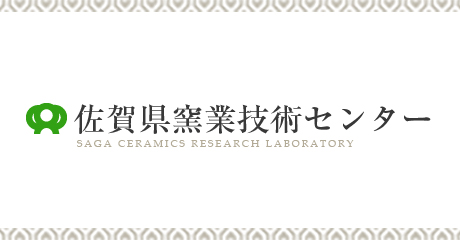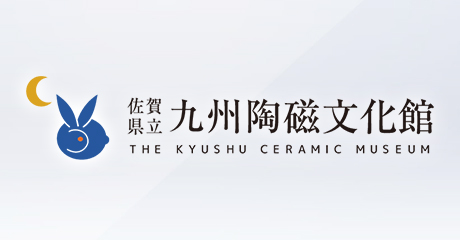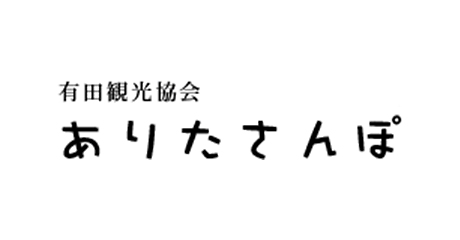019
World debut of the Arita porcelain new brand 2016/ . A growing self-confidence and awareness by overcoming difficulties
During the Milan Design Week, an international hotspot for designers and trend setters, the new brand 2016/, a child of the 2016/ project, made its debut. The following article gives an update on the Milan exhibition and the participating designers, potteries, and trading companies, followed by a report on the Netherlands and the start of the 2016/ exhibition in the Rijksmuseum, the Museum of the Netherlands, in Amsterdam, and the ARITA HOUSE AMSTERDAM.
Release of the 2016/ collections, a new Arita porcelain brand born from the 2016/ project
From across the world 16 designer groups joined the 2016/ project and for about two and a half years have been developing tableware. From April 12 to 17, 2016, an exhibition was held in Milan, Italy, in which Arita porcelain's new brand 2016/ made its debut into the world.
In the Brera Site located in the center of Milan, more than 300 pieces from 15 Standard Collections and 2 Editions created by the 16 designer groups were displayed and enthusiastically viewed every day by throngs of visitors.
On the opening-day press conference attended by all the designers, Stefan Scholten, one of the Creative Directors, joyfully exclaimed: "This achievement has been made possible thanks to the artisans in Arita, and by everyone on the team patiently working with us. We are here today purely because of exceptional teamwork."
Teruhiro Yanagihara, Co-Director, said the project was the fruition of many different collaborative efforts with the production center and support from Saga Prefecture and the Netherlands, and he went on to say: "We not only made commercially designed items, but also gave importance to how well we communicated with each other on this key regional revitalization project. This time we have released more than 300 products, but I would like everyone to know they were produced by the dedication of many more people." He then concluded: "In these pieces, you will find the spirit of today's Arita. I would be so pleased if all of us can feel these collections signpost the direction of ARITA for the next 100 years, and are not just anniversary designs."
After the preview at the venue, in an open kitchen specially set up in the basement, the project team and their visitors enjoyed dishes prepared by Masayo Funakoshi, a chef flown in from Japan. On April 13 and 14, a thank you dinner party was held for journalists, designers, and project helpers and well-wishers; a special treat from the 2016/ project. Team members learned how important it was to sit around the table and share food while chatting about the project with their counterparts. Every day saw business talks and final discussions with designers in readiness for later events and production.


Craftsmanship and stories captured in 15 Standard Collections and 2 Editions
2016/, a collection of new porcelain, is a distillation of the expertise of Arita artisans and the outstanding talent of 16 designer groups.
Scholten & Baijings studied and researched into the 400-year-old historic motifs and techniques of Arita porcelain, and designed an edition of 27 plates. The collection is the result of the fusion of cutting-edge production process and skilled craftsmanship, and proves what a rich source of inspiration traditional Arita porcelain offers contemporary designers.
Mr. Yanagihara's Edition created by making free use of porous ceramic materials is a virtuoso demonstration of previously impossible shapes, only now made possible by the latest technological developments supported by the Saga Ceramics Research Laboratory. The quest for innovative use of materials and production methods give the opportunity to explore new and exciting possibilities of Arita porcelain.
Not only Editions drew attention.
In the 15 Standard Collections as well, we find remarkable stories of artisans raising their game to meet many new challenges and the artistic demands made by designers.
With uncompromising monozukuri (art of manufacturing), Ingegerd Råman pursued beauty and quality. BIG-GAME worked on special materials such as porous ceramics and heat-resistant porcelain clay. Christien Meindertsma studied the history of Japan and the Netherlands and focused on the background and processes. Kirstie van Noort verified hundreds of color samples created from mineral waste. Christian Haas captured in ceramics the delicate beauty of folded paper. Stefan Diez kept making fine adjustments and consulting until the very last stage. The jewelry of Saskia Diez opened a new world of Arita porcelain charm. Tomás Alonso confronted flatness, verticality, and precise firing techniques. Inspired by Japanese rice and soup bowls held in the hand, Leon Ransmeier paid special attention to forms that cry out to be touched. Pauline Deltour drew inspiration from the shapes and colors of traditional Japanese tableware. Studio Wieki Somers respected craftsmanship proved by history and incorporated the lapis lazuli blue, so typical of Arita. Kueng Caputo made full use of the specialist fukitsuke airbrush painting technique on the shape edges. TAF explored tableware to be enjoyed by both adults and children. Shigeki Fujishiro focused on strong colors, textures and functionality. Teruhiro Yanagihara played with the perfection of imperfect glaze finishes.
Undoubtedly, there was the obstacle of physical distance between Japan and overseas to overcome, and exchanged words became changed words, and at first, the local artisans and international designers found it difficult to understand what was imagined and what could be done. Some designers gave very precise shapes and detailed dimensions, and others just suggested images and impressions; the ways and approaches to monozukuri were many and varied.
Moreover, much attention had to be paid to the realities of mass producing a practical, aesthetic and commercially viable product; the Standard Collections have a very different set of difficulties from the Editions.
However, the project members made considerable efforts over two and a half years to overcome such challenges and develop an international monozukuri; this experience has given self-confidence and strength to people in Arita, as clearly seen by their proud smiles. It was a memorable occasion full of hugs and joy when the designers and artisans met up again and looked at their creations together.



Sharing know-how improves skills and changes points of view
Like many traditional crafts, all the different stages involved in producing Arita porcelain, such as manufacture, marketing and distribution are very separate with very weak lateral links.
The 2016/ project has started to break down such divisions and is causing a stir in the production center systems.
Although each pottery was individually developing products with designers, they were aware of being involved with others and shared a sense of purpose and their own progress through the project umbrella. By pooling knowledge, a pottery with an apparently unsolvable problem was able to draw upon the experience of others in the project, giving rise to a higher level of monozukuri. The artisans really felt the strength of working in a loose collective effort rather than by working alone; such experience can only improve the skills and techniques of the entire area, and strengthen bonds between companies.
In 2016, the prefecture's project to celebrate the 400th anniversary of Arita porcelain will finish; however, the path that the future ARITA should follow could well be found in the continuous evolution of this shared sense of purpose, and not just be lost with the end of the celebration projects.
Under the 2016/ project, participating trading companies and potteries all pulled together and launched a new company, the 2016 Corporation, with members pledging their commitment to continue activities to ensure the increasing global awareness of Arita's advanced techniques and the successful distribution of Arita porcelain worldwide.
Exhibition in the Rijksmuseum in Amsterdam and ARITA HOUSE
In November 2013, Saga Prefecture and the Embassy of the Kingdom of the Netherlands concluded an Agreement for the Exchange of Creative Industries.
The Netherlands has been deeply involved in the 2016/ project, and as a part of bilateral exchanges, an exhibition, Arita Porcelain Today, opened at the famous Rijksmuseum in Amsterdam (April 22 to October 9, 2016). It is a wonderful opportunity to compare the contemporary products of the 2016/ collections displayed in the exhibition with the historic collection of the museum. https://www.rijksmuseum.nl/en/arita
In the same exhibition room, an exhibition of Kakiemon porcelain is also simultaneously shown, where works especially created and donated by Sakaida Kakiemon XV are displayed alongside 17th century Kakiemon porcelain from the museum collection.
In addition, on May 14, 2016, after renovating a historic building adjacent to the Rijksmuseum, the ARITA HOUSE AMSTERDAM was opened with the aim of building bridges between Japanese and Dutch cultures. The house will exhibit and sell the 2016/ collections and host lectures and workshops.
It was 1616 when porcelain ware was born in Arita, Saga Prefecture, and throughout its rich and varied history, Arita porcelain has always pursued new artistic expressions and continued to innovate, culminating in the turning point of its 400th anniversary, and the birth of 2016/. We would like to keep following this wonderful story with the wish that 2016/ will again connect Japan and the Netherlands, and inspire the artisans of ARITA to create ever more wonderful porcelain to share with the world.






